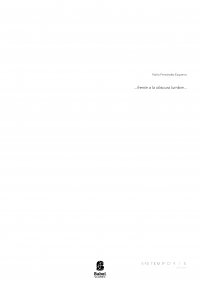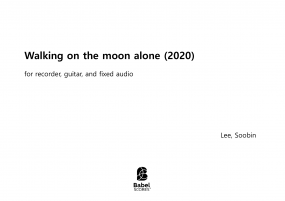old red barn
ISMN : 979-0-2325-6364-0
- Identifiez-vous pour créer une liste
Since the advent of audio recording technology in the late 19th-century, there has been a gradual and fundamental shift in the way that music is conceived of in the West. Rather than an activity or a process, music has increasingly become a commodity—something that can be accrued and stored for later enjoyment. This treatment of recordings as somehow perfectly encapsulating music ignores the people, places, and cultures of actual music-making—what Christopher Small calls musicking: human activities like performing, listening, and rehearsing. In reducing music down to “pure sound,” recordings also conceal the technological and cultural filtering at the heart of the recording process. In fact, ignoring these processes of filtering, is essential to preserving the illusion that music can somehow be easily “captured,” commodified, and reproduced.
Recordings are saturated with cultural and technological distortions. These distortions arise both from the imperfections of certain technologies in “capturing” sound and the biases of the human beings who themselves do the “capturing.” In many ways, recordings tell us as much about the music that they are meant to “capture,” as they do the people doing the “capturing”—their sonic sensibilities, what parts of the sound or the musical performance they choose to memorialize, what aspects they consider to be undesirable, and thus attempt to attenuate, erase, or obscure in the final “product.” As with any object that seeks to represent a specific moment in time (or moments in time), recordings are the result of millions of cultural, perceptual, and personal value judgments about what is worth preserving—and thus a determination on something in which there is very little consensus: where the music itself actually lies.
With all of these processes of filtering, of imperfectly representing actual musicking, recordings become even more fascinating to me. Recordings are not just representations of the music they are meant to “capture,” but rather an assortment of cultural and technological artifacts that result from this constructed process of conservation, of storytelling and world-making. I am compelled to ask: What can recordings tell us about a particular time, place, or culture? Despite all the distortion, can we hear the traces, the stories of the people who are on the other end? And if the recording can not effectively “capture” the music, then what is left? What is it that we are hearing?
old red barn is my creative response to some of these questions. The composition features samples from four different recordings. Each holds, for me, a special significance. The recordings all appear in different guises throughout the work, and many of them may not even be perceivable to the listener. The first is a recording from a damaged wax cylinder made in the United States at some point between 1890 and 1928. It features an anonymous solo fiddler playing “Old Red Barn,” a traditional tune likely with its origins in Ireland. The second is an excerpt from a recording of the Northern Cree Singers, a powwow and Round Dance drum and singing group, based in Maskwacis, Alberta, Canada. The sample is from “Rip It In,” a track on their 2009 Grammy-nominated album True Blue—a live album recorded at the 22nd Annual Red Mountain Pow-wow in Salt River Pima-Maricopa Reservation, Arizona. The third is a 2013 recording of Carlo Gesualdo’s Tristis est anima mea, the second responsory of the Tenebrae for Maundy Thursday (1611), performed by the Collegium Vocale Gent under the direction of Philippe Herreweghe. This recording was released on an album titled Responsoria 1611. The last recording is a personal field recording that I made on my smartphone in 2015 near the Amsterdamse Bos—an enormous English-style landscape park on the outskirts of Amsterdam. In the distance are the sounds of the Dekmantel Festival—an annual electronic music festival—as well as the sounds of bicyclists passing by.
Pages - 44







